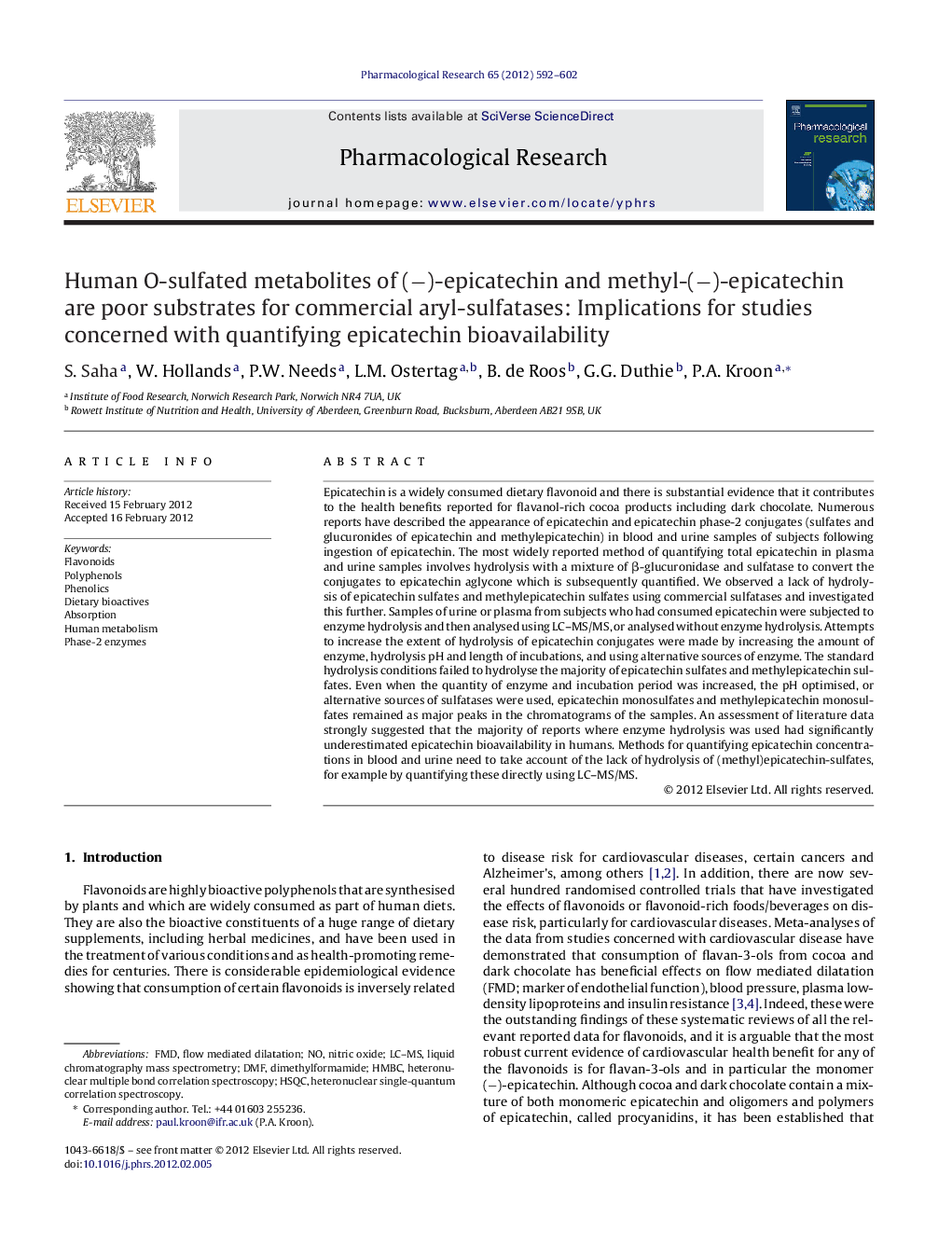| کد مقاله | کد نشریه | سال انتشار | مقاله انگلیسی | نسخه تمام متن |
|---|---|---|---|---|
| 2561555 | 1126935 | 2012 | 11 صفحه PDF | دانلود رایگان |

Epicatechin is a widely consumed dietary flavonoid and there is substantial evidence that it contributes to the health benefits reported for flavanol-rich cocoa products including dark chocolate. Numerous reports have described the appearance of epicatechin and epicatechin phase-2 conjugates (sulfates and glucuronides of epicatechin and methylepicatechin) in blood and urine samples of subjects following ingestion of epicatechin. The most widely reported method of quantifying total epicatechin in plasma and urine samples involves hydrolysis with a mixture of β-glucuronidase and sulfatase to convert the conjugates to epicatechin aglycone which is subsequently quantified. We observed a lack of hydrolysis of epicatechin sulfates and methylepicatechin sulfates using commercial sulfatases and investigated this further. Samples of urine or plasma from subjects who had consumed epicatechin were subjected to enzyme hydrolysis and then analysed using LC–MS/MS, or analysed without enzyme hydrolysis. Attempts to increase the extent of hydrolysis of epicatechin conjugates were made by increasing the amount of enzyme, hydrolysis pH and length of incubations, and using alternative sources of enzyme. The standard hydrolysis conditions failed to hydrolyse the majority of epicatechin sulfates and methylepicatechin sulfates. Even when the quantity of enzyme and incubation period was increased, the pH optimised, or alternative sources of sulfatases were used, epicatechin monosulfates and methylepicatechin monosulfates remained as major peaks in the chromatograms of the samples. An assessment of literature data strongly suggested that the majority of reports where enzyme hydrolysis was used had significantly underestimated epicatechin bioavailability in humans. Methods for quantifying epicatechin concentrations in blood and urine need to take account of the lack of hydrolysis of (methyl)epicatechin-sulfates, for example by quantifying these directly using LC–MS/MS.
Figure optionsDownload high-quality image (124 K)Download as PowerPoint slide
Journal: Pharmacological Research - Volume 65, Issue 6, June 2012, Pages 592–602